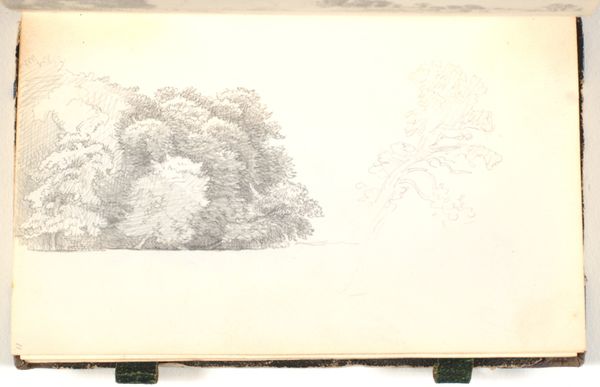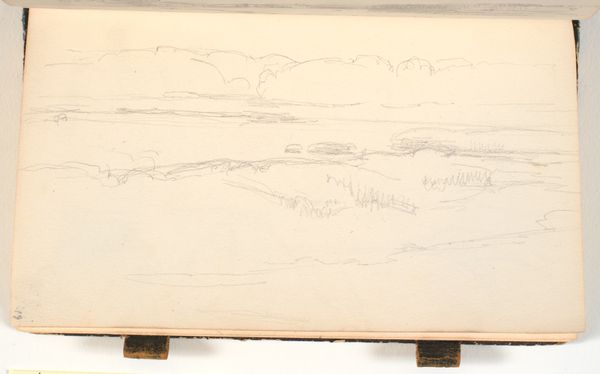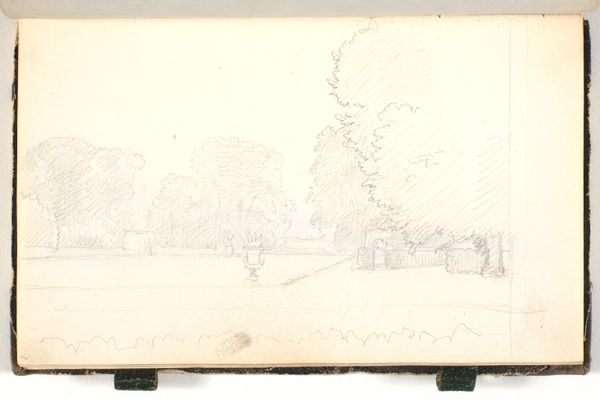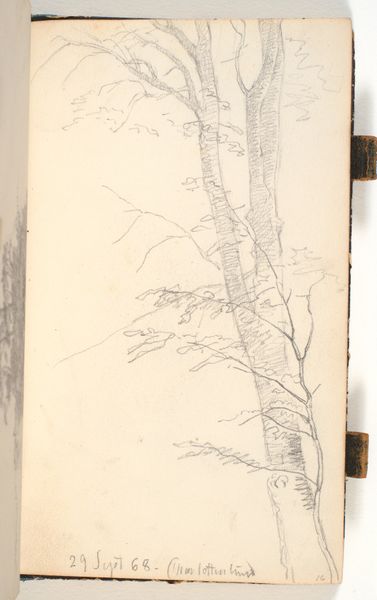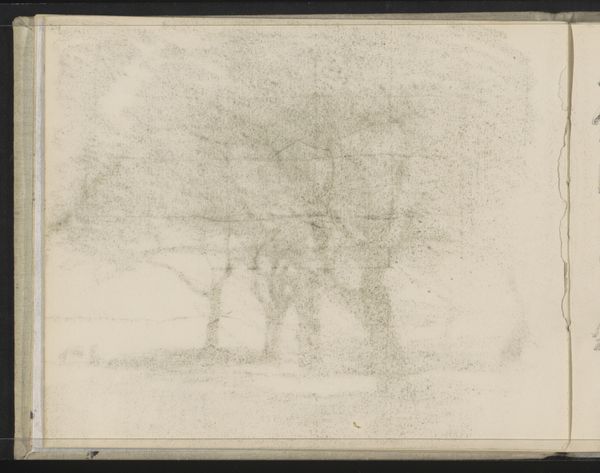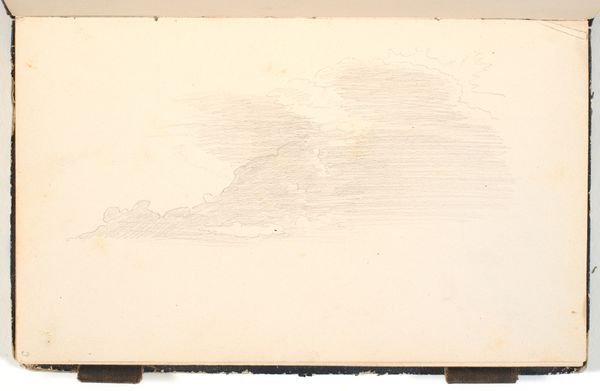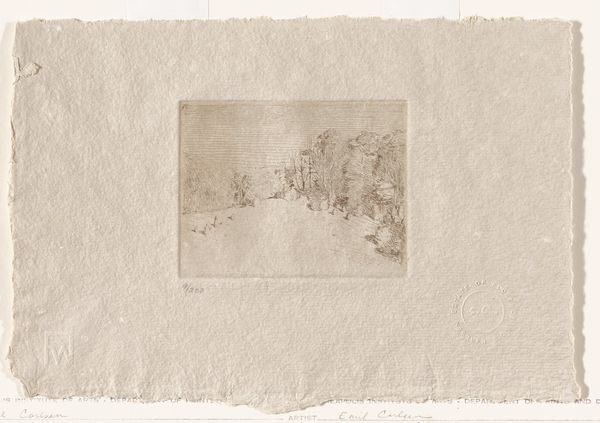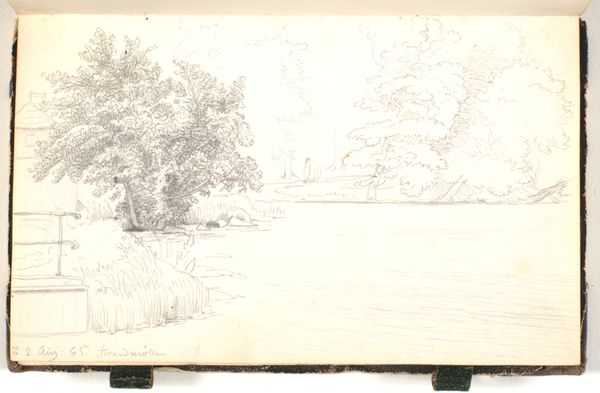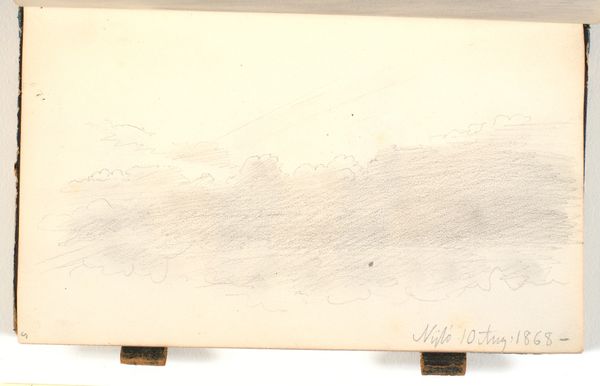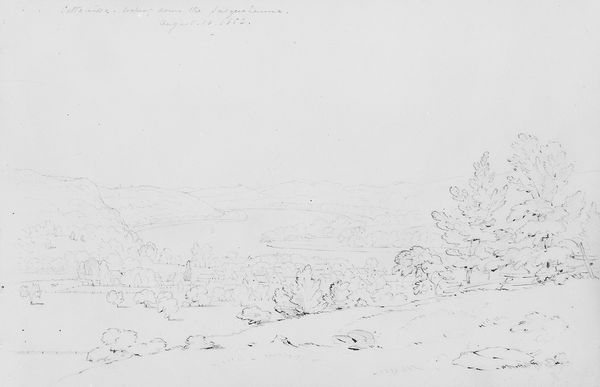
drawing, pencil
#
drawing
#
landscape
#
pencil
#
realism
Dimensions: 163 mm (height) x 100 mm (width) (bladmaal)
Editor: This is "View Towards a Forest Edge" by P.C. Skovgaard, a pencil drawing from 1865. It's very subtle; the tones are muted, creating this tranquil landscape, with the emphasis placed on capturing the texture and layering of trees and shrubs. What stands out to you when you look at this drawing? Curator: The composition immediately arrests my attention. Observe how the artist meticulously arranges the horizontal planes: the reedy foreground, the dense, undulating tree line, and the expanse of the sky, subtly articulated through the paper's untouched surface. The pencil strokes, though delicate, create a compelling rhythm, guiding the eye from the lower left towards the implied vanishing point somewhere near the middle of the tree line. Do you see how this careful orchestration avoids a simple, straightforward reading of the landscape? Editor: Yes, now that you mention it, it does feel like the various strokes of the pencil almost perform the role of brushstrokes, building up towards form and a hazy definition. Do you think the sketchlike nature is important to note? Curator: Indeed, the seemingly unfinished quality is precisely where its strength resides. The very choice of pencil as medium allows for a nuanced investigation of texture and form. Look at how Skovgaard utilizes hatching and cross-hatching to give depth to the foliage, creating a sort of controlled density which simultaneously hints at detail and embraces a form of abstraction. We witness the process of artistic interpretation itself; the image becomes less about pure representation and more about the act of seeing, recording, and then interpreting. Editor: I see. So, it’s less about what's there and more about how it's presented and interpreted through the material? Curator: Precisely. This interplay between representation and abstraction is what renders this seemingly simple landscape sketch so formally captivating. It compels the viewer to engage not only with the subject but also with the underlying visual vocabulary that structures our perception. Editor: This has given me a much deeper appreciation for this quiet work! It's interesting to view it now as more than just a sketch, but an active and calculated interplay of the intrinsic properties of image-making.
Comments
No comments
Be the first to comment and join the conversation on the ultimate creative platform.

